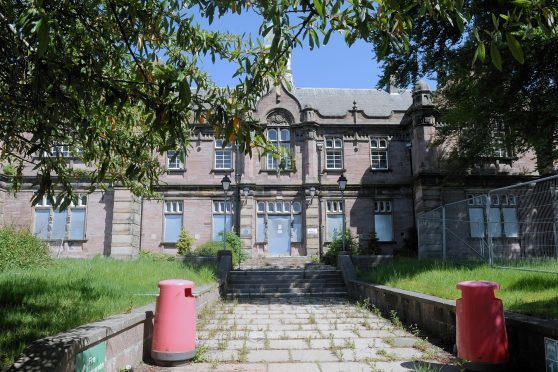A creative hub at the heart of the city is opening its doors to enthusiastic artists following a £2.2million transformation of its 18th century home.
The Midmills Building, once part of Inverness Royal Academy and Inverness College, has benefitted from a complete transformation of its arts and science extension, creating affordable workspaces for 39 local artists and makers.
The elaborate works are part of phase one of a £6m renovation project on the building, being led by Wasps Artists Studios, to create a vibrant space for artists at the heart of the city.
Once complete, the newly-renovated hub will generate around 109 jobs for the local community.
At an official ceremony at the crown based studio’s yesterday, dozens of budding artists, councillors and supports of the project gathered to celebrate the milestone.
To mark the occasion, Inverness Provost Helen Carmichael was presented with a multi-angled portrait created by painter David Fallow.
In her speech she touched on her years of study at the college. She said: “I have seen this building empty. I came and studied psychology in it when it was part of the college and it’s wonderful to see it as it is today, with this wonderful roof we have up here and the rest of the building.
“This facility is not just for artists but a facility and a resource for the Highlands. I wish to formally welcome wasps all the tenants based in the building and to wish you every success. I therefore, it gives me great pleasure to officially declare Inverness Creative Academy phase one now open.”
Phase two of the works is expected to take 12 months to complete, creating 56 creative workspaces and 26 flexible working areas as well as a number of meeting rooms a public café and an exhibition space.
Mr Fallow was one of the first artists to take up a studio at the city’s Creative Academy. He spoke of the benefits this collaborative space has already brought to him and his fellow creators.
He said: “Already this is the big gap between art school and practice because with me and most of the artists here, have spent anywhere from five to 25 years sitting in a shed somewhere.
“When you are in a group together its remarkably supportive. Nobody’s is doing exactly the same thing and therefore, everyone will give you feedback on what you are doing so that’s the first sort of thing that changes. Once they get that other building cracked up, what you have here is a factor for producing artwork that can be sold on the premises.”
